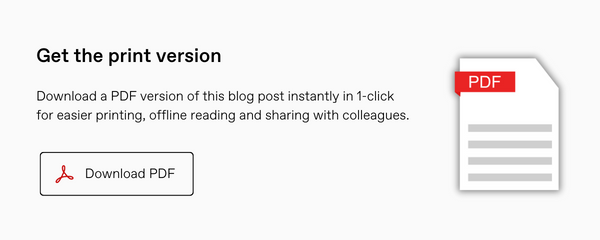The 4-step Employee Bonus System That Drives Results
With the staff recruitment and retention landscape more difficult than ever, retaining key talent and attracting new members to your team are top concerns.
One potent tool in your arsenal is implementing an employee bonus strategy.
To ensure any incentive program is impactful and achieves its intended goal, here a simple 4-step process.
How to Create an Effective Bonus Strategy for Your Business
Step 1. Find Your “Why”
A good bonus system starts with clarity around your own objectives. Why do you want to introduce it? It shouldn’t be simply because you heard a friend talk about one for his company, or even because you read this article. Instead, you need to do it for your own reasons so you can go into it wholeheartedly, intending to benefit all parties. A genuine intent to recognise and reward exceptional performers is the ideal place to start.
Key takeaway: Have a clear understanding of what your motivation is behind a bonus system. Ask yourself: “What is my ‘why’ for doing this?”
Step 2. Understand Your Team’s Motivations
Following understanding your individual reasons, considering if a bonus system will get buy-in from your team is next. Is it something that would genuinely motivate employees to go above the expected level of performance? Remember, employees receive a salary or wage for completing their job at the minimum standard; rewarding expected performance is not the goal. Instead, an effective incentive should aspire your team to rise beyond the ordinary.
What a bonus system should not be
There are two ‘I’ words to avoid when creating a bonus system:
- Insulting: You don’t want a bonus that is insulting. For example, if an employee’s annual salary was $100,000 and a bonus was worth $100, it would likely not be perceived as valuable enough to justify extra effort.
- Impossible: The bonus should not be impossible to obtain. It must be realistic enough that employees believe it is obtainable.
Key takeaway: Ensure the bonus you offer is aspirational, valuable and achievable.
Step 3. Set the Right Priorities
An effective bonus system rests upon setting clear priorities for the business, its shareholders and the employees – in that order.
- Business stability: Before considering bonuses, the business must a robust financial foundation. Without being in good financial stead, external factors such as a downturn in the economy could mean you can’t employ people, let alone pay them a bonus. It’s crucial to determine the minimum financial return the business must generate before anyone gets rewarded – before shareholders, before employees.
- Shareholder interests: As employees are already compensated financially by their wage, shareholders should be considered following the business. As vital stakeholders, determine the minimum return shareholders need to receive before any employee incentives are considered.
- Employee bonuses: Once the first two considerations are met, you can be confident there is enough financial security to implement a bonus system for team members.
Key takeaway: Understand the minimum financial return the business must generate for itself and shareholders before determining bonuses for employees.
Step 4. Determine the Mechanics of Your Bonus System
Lastly, the nitty gritty. Consider the following components for any employee incentive program.
Ensure business safety
A bonus system should never jeopardise the company’s financial health. For example, avoid using a calculation that results in someone getting rewarded if the business hasn’t performed as expected.
Choose the right metric
We recommend using gross profit dollars, which speaks to the ultimate output of your business and is influenced by various departments. Net profit, on the other hand, comprises budgets and overhead cost control that should be the responsibility of management and a select few, not the totality of the business. It is also more difficult to track and you may not want to share this figure with team members. Gross profit is comprehensive and encapsulates most business operations, making it more suitable.
Key takeaway: Look at gross profit dollars to determine how much you can allocate to employee bonuses.
Incentivising desired behaviours
A solid bonus system should encourage positive behaviours and discourage negativity. You don’t want employees trying to knock each other down to achieve their bonus. In this way, bonus strategies can also be a potent tool to encourage desirable soft skills such as punctuality, and an overall healthy work environment.
Key takeaway: Ensure your bonus system promotes positive behaviours and discourages negativity.
Maintaining influence & clarity
Employees should feel their efforts can influence bonus outcomes. For example, we know of someone who worked at a large listed corporation where his bonus included company shares. While potentially lucrative, the bonus being tied to share price meant the incentive was outside his control.
Employees should also be able to understand the way bonuses are derived. Don’t let an accountant do it! Joking aside (noting we are a business of, and founded by, accountants), the calculation must be transparent and easy to comprehend for all team members. Without understanding what they’re working towards and why, it will be harder to motivate them.
Key takeaway: Ensure bonuses are calculated clearly and correlate to individual effort.
Conclusion
Crafting an effective bonus strategy isn’t just about added financial perks. It’s a systematic approach to recognising hard work, fostering motivation, and ensuring a harmonious growth path for the business, shareholders, and employees. When implemented thoughtfully, it can become a win-win for everyone involved, further cementing the bond between a business and its invaluable team.
Learn everything we teach our clients, for free
Join 350+ business owners & key decision-makers who receive free business & accounting tips, delivered straight to your inbox every week. Sign up now.




